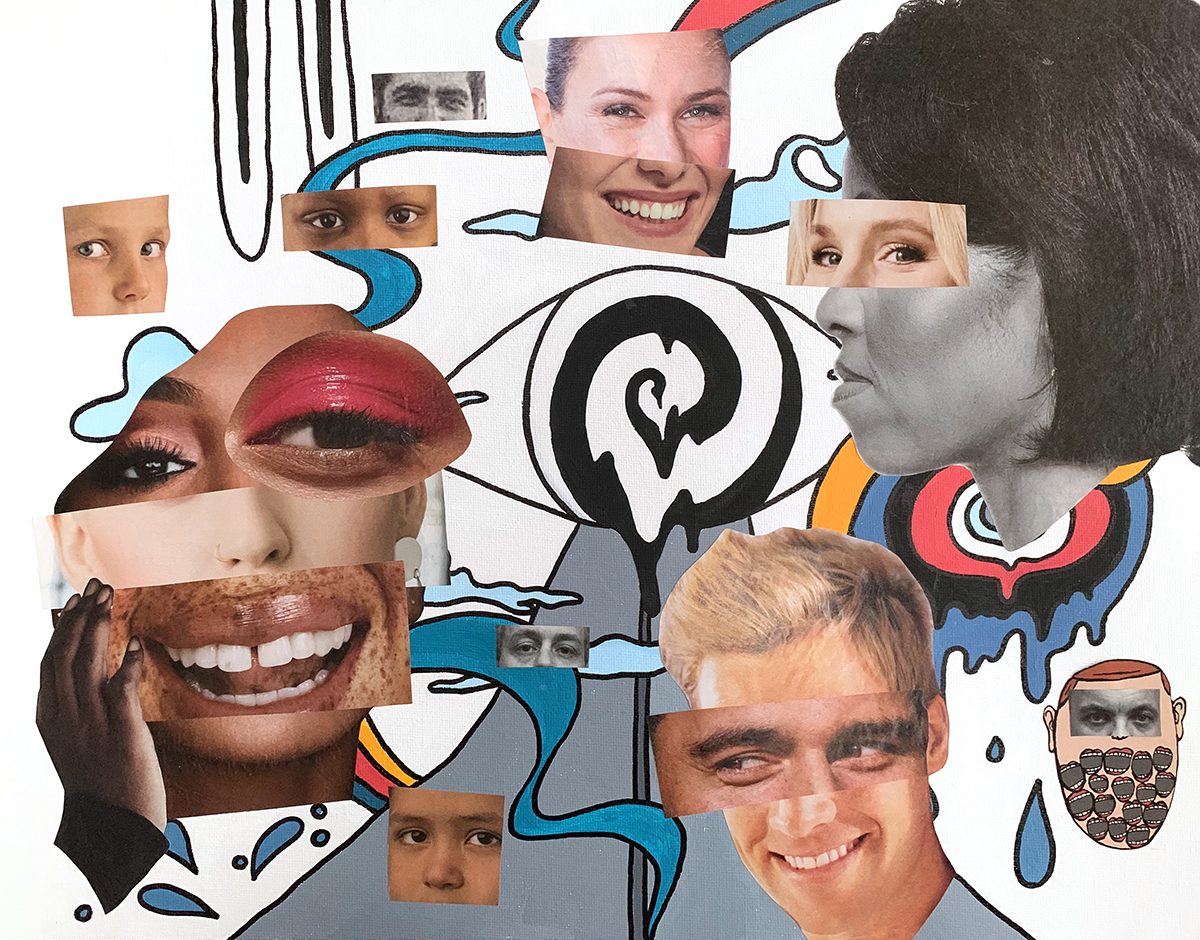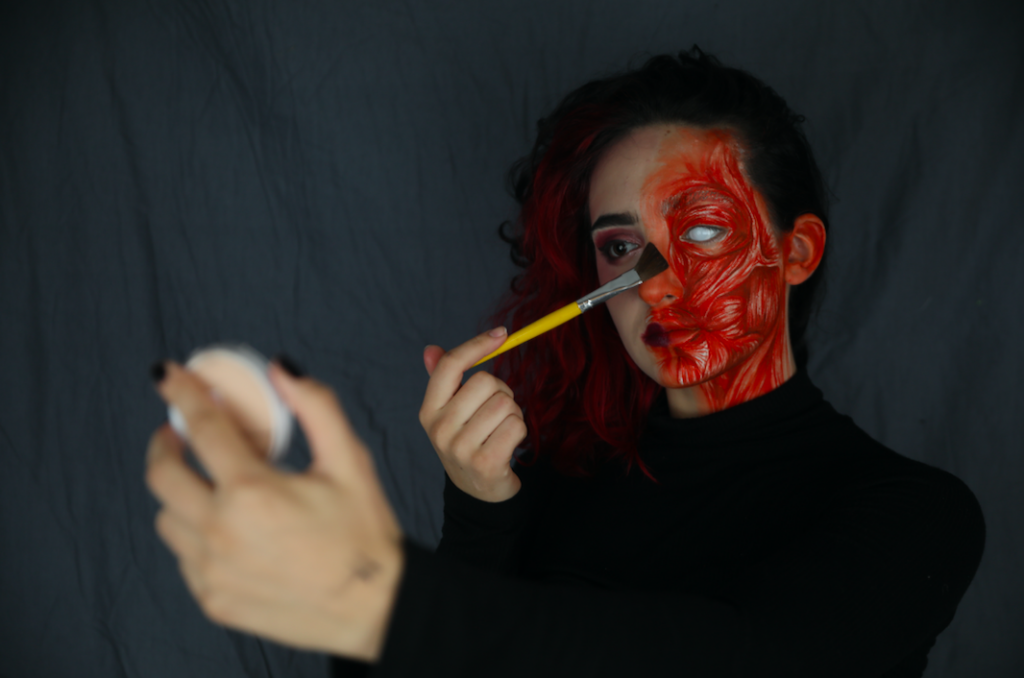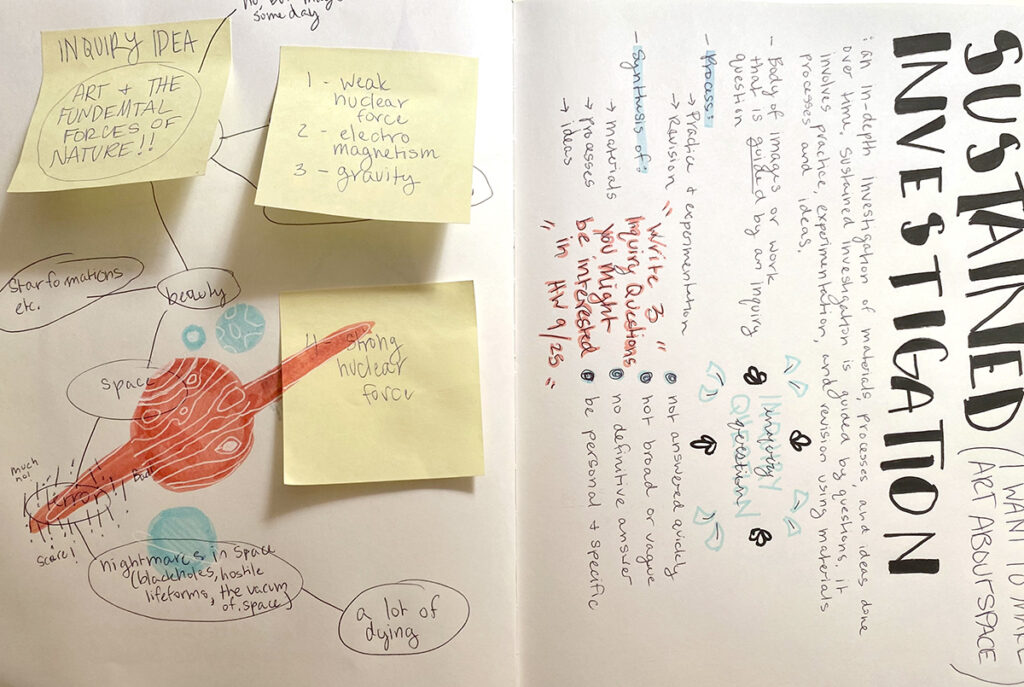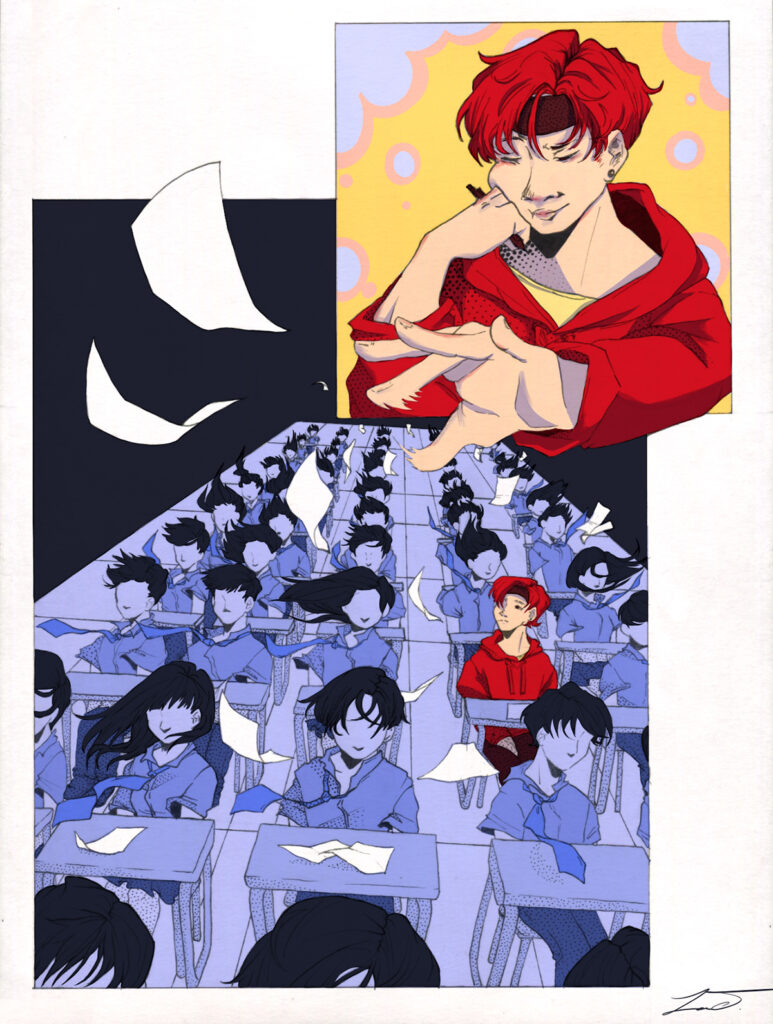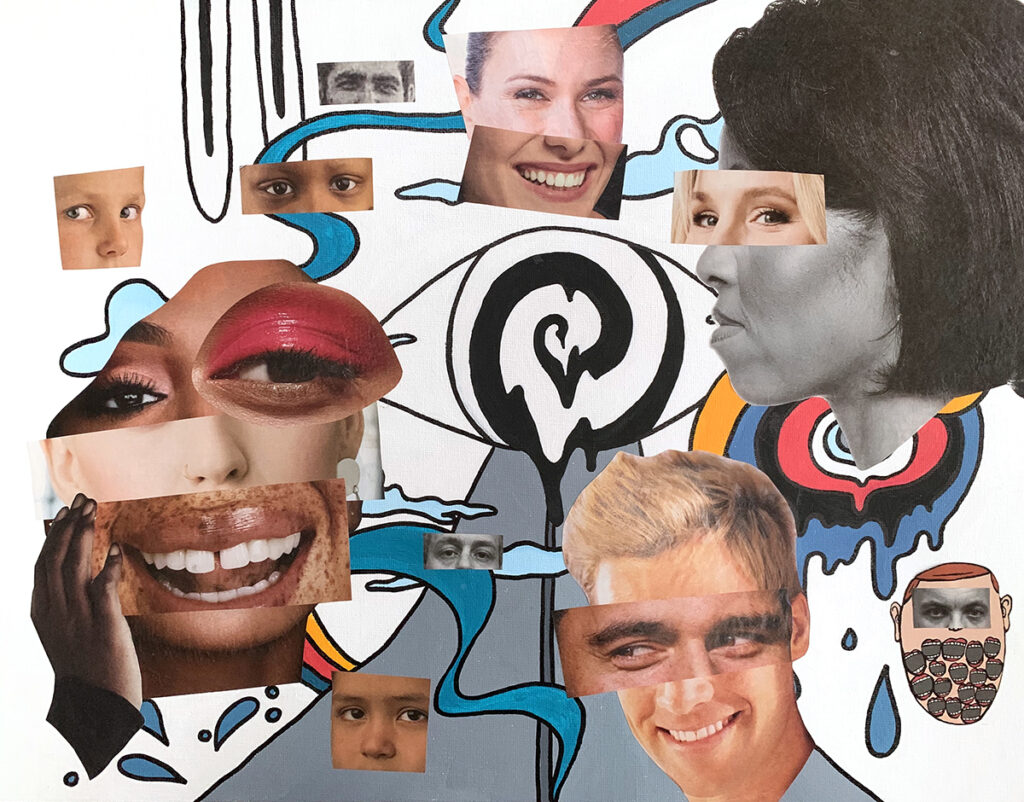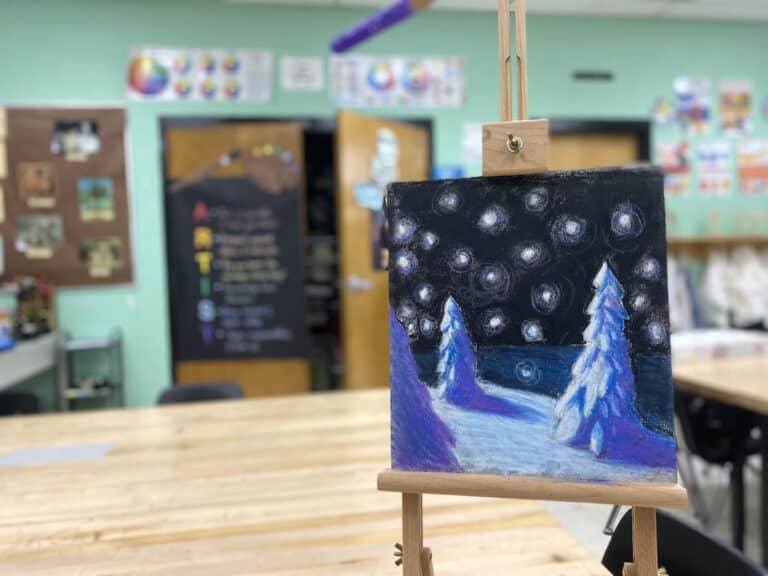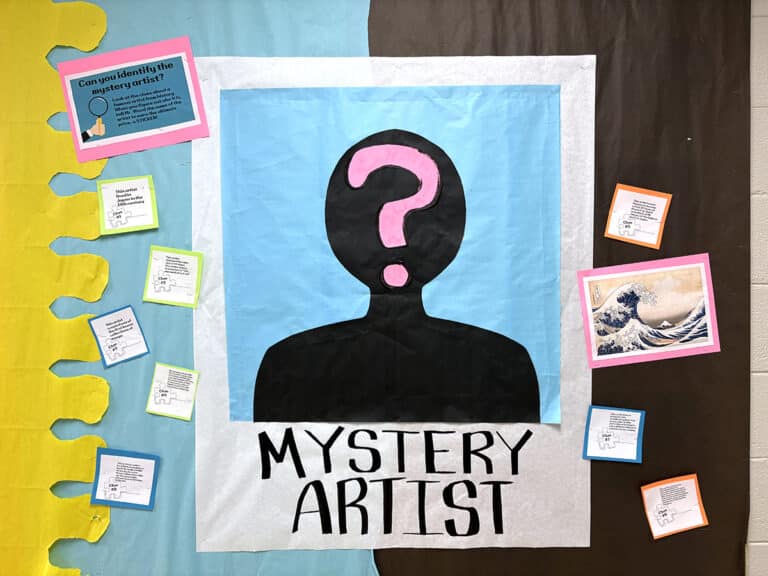Whether you are new to AP or a veteran teacher, scheduling and pacing are always challenging. While everyone’s school calendar looks a bit different, there are some universal ideas to help prepare your students for the submission deadline. Let’s take a look at a few tips to get you started.
For a broader overview of Advanced Placement Art and Design Portfolios and the changes made to the structure and assessment of the course, check out this article first. It even includes a handy download that outlines all of the requirements in one place that you will want to bookmark or print now!
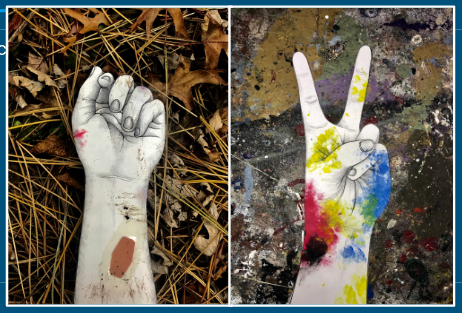
Here are nine tips to guide your planning and the support of your AP students:
1. Get to know your students through their artwork.
Sometimes students come to us without having taken an art class prior. Or maybe they came from another art teacher, and you have no idea what skills they have. A great way to start this process is to ask students to create a mini portfolio of five artworks. This curated group of “historical bests” not only gives students a chance to show off their favorite artworks but also to provide explanations. You will get a quick sense of what skills need further development and support. You will also be able to see the media, techniques, and personal aesthetic students are bringing to their portfolios.
2. Start off with intentional warmups.
While the “breadth” section of the portfolio no longer exists, these types of artworks make great assignments in AP prep classes. Even if you don’t have any prep courses, these warmup artworks are a great way to start the year and get back into the rigor and pace expected for AP.
So, what do these look like? Consider art prompts that are open for interpretation but allow students to explore conceptual thinking while pursuing the media and techniques of their choice within their designated portfolio rubric requirements. Prompts such as “inside out” or “move it” push students to interpret, research, and respond with their own voice while addressing foundational visual art concerns.
3. Practice creating around the rubric.
Understanding the AP rubrics is a challenge in itself. Help students connect with the language through their artmaking. For example, students might not understand what “synthesis of media, ideas, and processes” means just by reading the rubric. Provide practice prompts such as “create a self-portrait using nontraditional materials and techniques.” These artworks often work well for selected works or to propel student interest into their Sustained Investigations.
Continue to introduce and discuss artists who demonstrate these large ideas. Take a look at artists such as Merritt Johnson, Julie Mehretu, and Mark Bradford. Analyzing language with concrete examples will help students connect with the rubric expectations.
4. Transition into the Sustained Investigation.
As you prepare for the Sustained Investigation, know that students will need help developing inquiry questions that are both broad and specific. It’s a strange concept! When students start out, they should have a question that isn’t too generic that provides too many paths to pursue with little focus. Practice developing inquiry questions and honing in on what interests students before they jump into their work.
Remind students that this can be a rabbit hole as they wind deeper and deeper into their portfolio journey. Don’t be afraid to introduce new media and techniques, even when students are deep into their portfolios. Break up the intense continued work with some image transfers or papermaking. You never know if or how students will integrate these fresh ideas into their current artwork.
5. Support writing with routine practice.
Writing can be tricky for many students. After students have started their first few pieces of the Sustained Investigation, have them draft an artist statement. I often do the first one without any support so I can see how a student writes and thinks about their work. Then, analyze real-life artist statements. Take a look at how contemporary artists ask questions and how their work responds visually. Identify how their artist statement pulls out evidence from their work to support their investigation and body of work. Students can rewrite their statements to reflect what they have learned, engage in critiques, and make several drafts before their final submission.
Beyond the statement, students need to practice writing about each artwork. The portfolio has a stringent character count to express the ideas, processes, and media for each artwork. Creating a portfolio template in a slides program provides a framework for students to organize their work and consistently practice writing and fitting ideas into 100 characters.
6. Look ahead at schedules and pacing.
This is probably the trickiest piece to get students ready for submission. You might have one semester to prepare students, or you might have two years with a prep program. Some teachers start school in late July, while others start in September. The deadline for submission, however, is the same for all students. You will have to look at the different ideas presented and consider what will work for your students in the time you have with them.
Because students don’t have to submit a required number of artworks for the Sustained Investigation (which is up to 15 images), it can be especially hard for teachers to set deadline expectations. A great way to combat this is to expect progress images and pieces of writing biweekly. As students document and share their process and finished work, you get the unique opportunity to give them consistent feedback. Then, students can go back and revise their work. A bonus of the biweekly check-in is that students end up with documentation of multiple versions, which is another big piece of the AP portfolio expectations.
Because students generally struggle with time management, try using a weekly goals sheet. Students can identify their large goals and break them down over time (a week, a day, that hour) to decrease the likelihood of procrastination. Making this a routine practice in your classroom supports studio habits and will integrate seamlessly into your teaching.
7. Assess student work with consistent feedback.
Teachers all have different philosophies when it comes to grading. Focusing on the assessment of each student’s portfolio through consistent feedback is where students will thrive. Remember, the portfolio is about building works over time, including revision. While the overall idea of each of the AP Art and Design Portfolios is the same, each of the three portfolios is assessed differently through the lens of specific art and design challenges. Make sure to always refer back to the AP rubrics as you assess and provide feedback.
8. Prepare for submission.
This is truly the most stressful time. The final two weeks is usually a major push, leaving teachers wondering how students will ever pull it off. In the weeks before submission, students should make sure they have good quality photos of their artwork, images are resized per the requirements, and artwork is prepared to be shipped by matting, backing, or protection in the provided portfolios.
While some teachers start their students uploading artwork along the way, others prefer to wait. Curating work and uploading in the last week can help streamline the final submission process. Remember those slide presentations you have been working on all year? Now you can reorganize the artwork organization, tweak the language, then simply copy and paste directly from the slides to the submission portal.
One option may be to request an in-school field trip. Students are pulled from class to take AP exams in other content areas, yet art has an 8 p.m. EST deadline. While this won’t stop you from nagging students and pushing the “forward to AP Coordinator” button at 7:59 p.m., it can definitely keep it to a minimum. By assigning half-day field trips for groups of students, you can help them submit their work at that moment. Any number of issues pop up at the last minute. Being together to troubleshoot significantly decreases everyone’s stress.
9. Celebrate!
Creating an AP portfolio is quite the journey! Don’t forget to celebrate this huge feat. First, make sure to download a PDF version of the portfolio after submitting it. This serves as a record of what was submitted for the student, and it also serves as an example for future classes.
Create a tradition to signify each student’s submission. It was an exciting honor to ring a bell when a student completed their submission in my AP class. It might sound a bit cheesy, but those students couldn’t wait to ring the bell and share their success with everyone.
If you still have time left in your calendar after portfolios have been submitted, let your students bask in each others’ amazing accomplishments. As deadlines loom near, students often don’t have the opportunity to view others’ work. Share final portfolios through a presentation party and celebrate with the “oooh’s” and “ahhh’s” from their peers.
As a teacher, you also deserve huge kudos! You have just finished a year of guiding your students through the AP process. This included worry, anxiety, stress, and excitement. Enjoy a nice dinner, get a manicure for those poor nails you chewed up, sleep all weekend in your pajamas, and vow to never teach AP again… Just kidding.
As students progress into advanced levels with less teacher instruction and more studio time, it can be difficult to know how to create a successful pacing schedule. Take a look at your practice and consider what supports need to be put into place through each stage of portfolio development. In the beginning, students need more time to learn, practice, and experiment. In the end, the schedule needs to be more about the logistics driven by checklists and deadlines. All along the way, students still need instruction and support where they are at in their journey. Teaching AP is both exhausting and incredibly rewarding. Make sure to celebrate the journey with your students, who are both unique individuals and a cohort of amazing artists.
For more conversations around AP Art and Design, check out these two podcast episodes:
How do you set your AP students up for success?
What are your favorite strategies to support students through portfolio development?
In what ways do you and your students celebrate after submission and throughout the year?
Magazine articles and podcasts are opinions of professional education contributors and do not necessarily represent the position of the Art of Education University (AOEU) or its academic offerings. Contributors use terms in the way they are most often talked about in the scope of their educational experiences.

